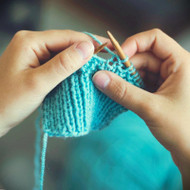What Are the Best Tips for Knitting Success? The Knitter’s Guide
Posted by Kelly Holtsclaw on Mar 10th 2023
'What Are the Best Tips for Knitting Success' is a question that both new and experienced knitters often ask when aiming to craft cozy and beautiful projects. Whether you’re starting with your first skein of hand-dyed or commercial wool, or looking for ways to improve your knitting skills, these 16 helpful tips will boost your confidence and enhance your results quickly.
16 Essential Tips for Knitting Success
- Don’t Fear Mistakes: Mistakes are a natural part of the knitting journey. Learn, adjust, and celebrate each step forward.
- Start with Simple Projects: Choose beginner-friendly patterns like scarves to build confidence and develop basic skills.
- Choose the Right Yarn: Worsted-weight yarn is ideal for beginners—easy to handle, comes in many colors, and is less likely to split.
- Pick Suitable Needles: Match needle type and size to your yarn and pattern. Aluminum and bamboo needles are great places to start.
- Follow the Pattern: Carefully read each pattern step and don’t hesitate to ask for help if you get stuck.
- Master Basic Stitches: Focus on the knit, purl, and yarn over; these building blocks form the basis of nearly every project.
- Take Your Time: Work at your own pace—knitting should reduce stress, not add to it!
- Check Your Gauge: Swatching before you start ensures your project will fit as expected.
- Be Patient & Practice Stress Relief: Take breaks, breathe deeply, and listen to calming music as needed.
- Practice Makes Perfect: Even a few minutes daily will help grow your skills and confidence.
- Join a Knitting Group: Community support accelerates learning and makes the experience more enjoyable.
- Read Knitting Blogs: Get inspired and learn from those with experience, plus stay updated on trends.
- Watch Knitting Videos: Visual tutorials are invaluable for mastering techniques and overcoming tricky sections.
- Use Stitch Markers: These tools help keep your place, making projects less daunting and tracking patterns easier.
- Block Your Projects: Finish your work professionally by shaping and setting stitches as specified in the patterns.
- Have Fun With It! Pick favorite colors, organize your supplies, savor the rhythm, and celebrate every completed piece.

